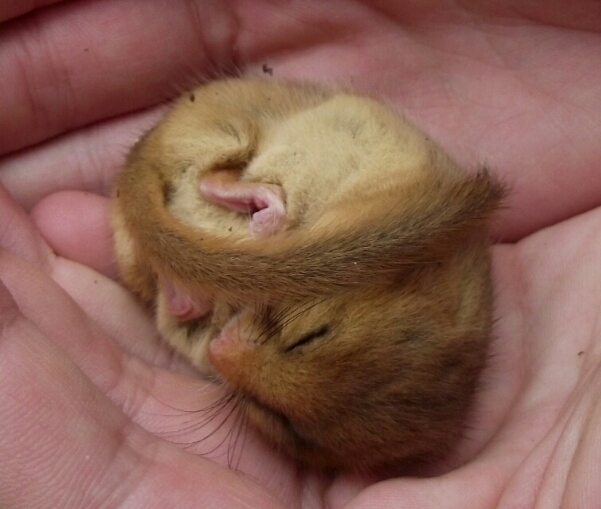Surely we must have, we just have to find them. Within the parish there are suitable woodlands and old hedgerows, habitats they need containing shelter and food plants - honeysuckle, hazel, bramble and other flowering and fruiting species. Dormice can be found close-by in the woodlands of the Chalford Valley.
Over the last two years a number of special nesting boxes have been sited on private land near Cowcombe Hill and Knapp Farm to try and answer the question, though these have so far only been occupied by Blue Tit families. Further monitoring will continue this season. Sometimes a dormouse can be found tucking into peanuts in bird feeders so if you have any in your garden close to hedgerows it is worth keeping a look out for them from late March onwards.
The Common or Hazelnut Dormouse is a small creature, has a thick furry tail and is bright golden-brown in colour. It has large liquid-black eyes that are quite beguiling. It is about the size of a small mouse, 70mm body length with its bushy tail the same measurement. A fully grown adult weighs 17g or so in the spring and around 35g by hibernation in the autumn. They feed on flowers, pollen, insects, ripe nuts, seeds and fruit.

Other Facts:
- Mostly nocturnal in habit, feeding at night in trees or hedgerows.
- Sleeps during the day in a deserted bird's nest, hollow tree branch or their own ball shaped nests.
- They hibernate over winter from November until April in nests built on or near the ground, Their body temperature drops to that of the surroundings and the heart and breathing rate are often reduced by 90%.
- Dormice have one litter of about four young produced during August or September. The babies are born pink, blind and hairless but become independent after 6 -8 weeks.
- The word dormouse comes from the French 'dormir' - to sleep.
- Dormice are a protected species and a licence is needed to inspect nest boxes and handle them.
If you are lucky and see a dormouse or find a ball shaped woven nest, close to the ground, often in low bramble bushes, can you let the author know please.

